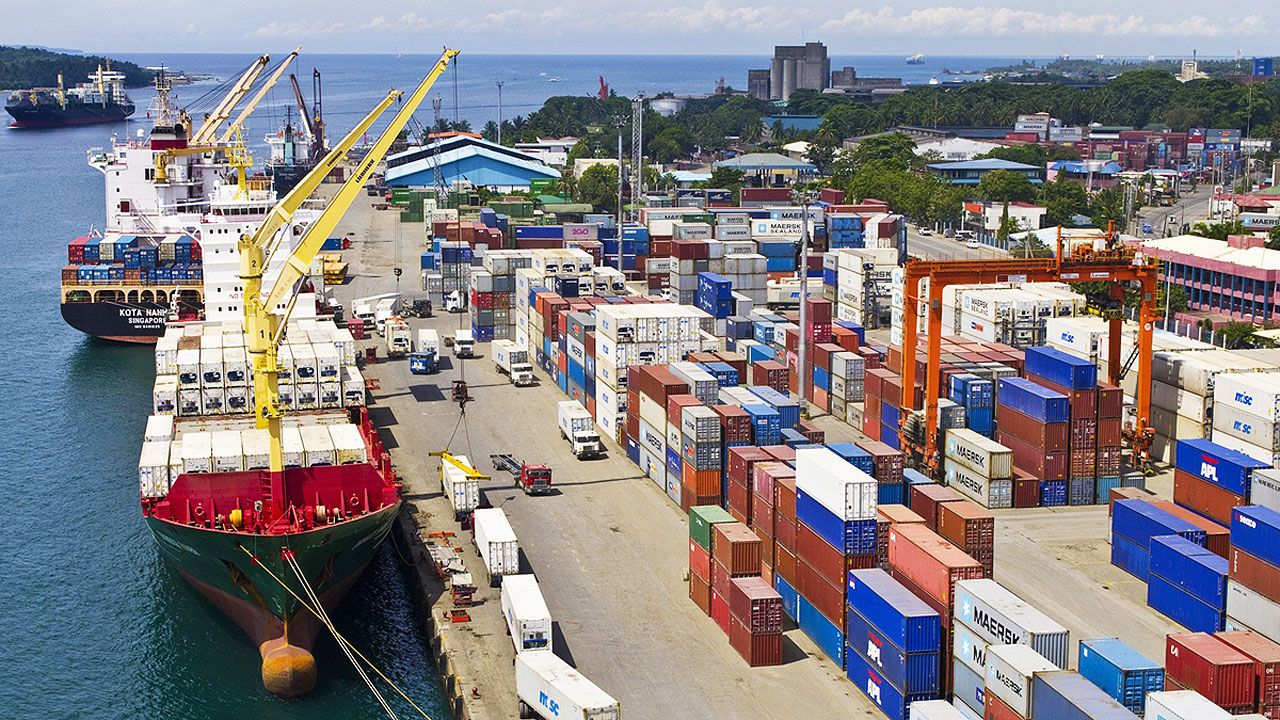Sept. trade deficit narrows to $4.8 billion

The country’s balance of trade deficit narrowed in September after imports growth slowed to a 19-month low while exports ended its two-month slump, the Philippine Statistics Authority (PSA) reported on Friday.
The total import bill reached $11.978 billion in September, up 14.1% year on year, preliminary data from the PSA showed. However, this was lower than the revised 26.2% growth in August and 22.8% in September last year.
Despite the pace of imports growing for the 20th straight month in September, it was the slowest growth in 19 months or since the 9% uptick in February 2021.
Demand for locally produced goods, meanwhile, went up 7% year on year in September to $7.158 billion, ending two straight months of annual declines. Export performance that month reversed the revised 2% fall in August was also higher than 6.4% growth in September last year.
This brought the trade deficit — the difference between exports and imports — to $4.821 billion in September, wider than the $3.811 billion gap last year. This was narrower compared with the record $6.021 billion deficit in August.
September’s total trade — the sum of exports and imports — increased by 11.3% to $19.136 billion. This pace was slower than the 15% growth in August and the 15.8% climb a year ago.
Year to date, imports rose by 24.6% to $104.964 billion, already breaching the Development Budget Coordination Committee’s 18% target growth this year.
Likewise, exports grew by 4.7% year on year to $58.313 billion during the same period, below the government’s 7% growth target.
Trade balance in the nine months to September ballooned to a $46.650 billion deficit, about 1.6 times wider than the $28.580 billion trade gap during the same period last year.
Bank of the Philippine Islands Lead Economist Emilio S. Neri, Jr. said the continued growth in imports was driven by recovery in demand despite the surge in commodity prices.
“The peso was trading at the 57-58 level in September, and yet demand for imports was resilient,” Mr. Neri said in a Viber message.
“Imports may continue to expand significantly in the coming months especially after the recent typhoons. The country may need to import more from abroad in order to address the food shortage and prevent another surge in prices,” he added.
Meanwhile, ING Bank N.V. Manila Senior Economist Nicholas Antonio T. Mapa said that the slower growth of import bills due to base effects of the further reopening of the economy.
“Imports had posted outsized gains due in part to base effects from the reopening. Going forward we could see imports normalize but still see growth, but upside may be capped as growth momentum is expected to slow,” he said in an e-mail.
Exports of manufactured goods in September jumped by 13.4% year on year to $6.056 billion. This commodity group accounted for 84.6% of total export receipts that month.
Electronic products, which accounted for three-fifths of manufactured goods, increased by 19.3% to $4.506 billion in September. With an 80% share of electronic products and half of the September receipts, semiconductors also grew by 28.2% to $3.597 billion.
Meanwhile, imports of raw materials and intermediate goods dipped by 2.6% to $4.398 billion. This group made up nearly 40% of the total import bill in September.
Imports of capital and consumer goods amounted to $3.320 billion and $2.156 billion, up by 11.1% and 28.7%, respectively.
Likewise, mineral fuels, lubricant, and related materials surged by 64.2% to $2.039 billion.
The United States, which accounted for 16.4% or $1.171 billion of the total receipts, was the top export destination in September. It was followed by Hong Kong’s 14.9% ($1.064 billion) and Japan’s 13.9% ($997.073 million) share.
Meanwhile, China was the country’s main source of imported goods in September. Imports from China amounted to $2.390 billion, which made up a fifth of the total September import bill. Indonesia followed with $1.350 billion (11.3%) and Japan, $1.135 billion (9.5%).
Philippine Exporters Confederation, Inc. President Sergio R. Ortiz-Luis, Jr. expects exports to increase for the rest of the year, although at a slower pace as the economy reopens further.
“It would continue to increase. I think we are looking at $100 billion for the year as compared to $7 billion last year,” he said in a phone call interview.
“Exports bounced back as electronics shipments came back to life, posting a hefty increase after contracting in the previous month. This could possibly be linked to new model releases for smart phones or devices from partner countries.” Mr. Mapa said.
Mr. Mapa expressed uncertainty in the export output of the country as the local currency continues to weaken against the dollar.
“There were some expectations that a weaker foreign exchange could help drive exports however we have seen that this was never sufficient to be the savior of the export sector,” Mr. Mapa said.
“The weaker peso can make exports more enticing, but we need to ensure that our products are competitive outside mere foreign exchange movements,” he said.
Mr. Neri, meanwhile, also noted that the peso may continue to depreciate as the country relies on imports.
“With the country becoming more and more reliant on imports, dollar outflows will continue to significantly exceed inflows. The import bill will also remain substantial if oil prices just stay at current levels,” he said.
“Even if the [US Federal Reserve] stops hiking in 2023, it may not necessarily lead to a huge appreciation of the peso given the country’s fundamentals. The peso may even continue to weaken in this scenario if the trade deficit remains sizable, although at a slower pace compared to this year.” Mr. Neri added. — Mariedel Irish U. Catilogo




